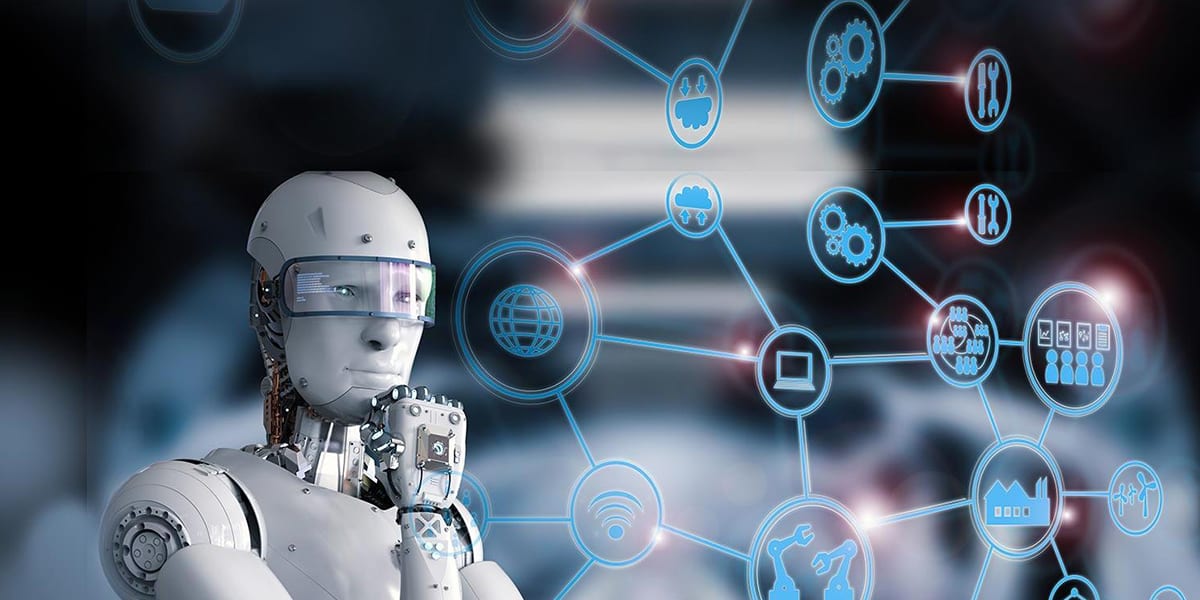As Artificial Intelligence and robots continue to become more crucial in the workplace, employees face the daunting challenge of figuring out how to cope with the significant changes that will most definitely accompany automation. Automation is no longer a fairy tale or some impossible dream, it’s happening faster than you think. So it’s critical to prepare yourself for the immense changes that are sure to occur. Interestingly, researchers from McKinsey estimate that more than 45% of current jobs can be automated. There is an urgent need for employees to start preparing themselves for the inevitable future of AI and Robots. AI and Robots will be significant in everyone’s future jobs. Unfortunately, several organizations today are not prepared for such a significant transition. In fact, advanced data analytics and digitization have already brought about a significant gap between the skills people have and the skills required by organizations. This gap in skills will not even compare to the substantial changes that automation will bring about. Although no one can accurately predict what will happen in the future, however, there are specific changes that are expected to take place. Here are just a few.
Workers will be displaced
According to data from McKinsey, some jobs will experience a significant decline by 2030. While some workers will be displaced. It is estimated that about 15 percent of the global workforce or about 400 million workers could be displaced by automation by 2030. Based on these estimates, the figure could potentially rise to about 30 percent or 800 million workers. In our slowest adoption scenario, only about 10 million people would be displaced, close to zero percent of the global workforce
More Jobs would be created
At the same time, more jobs will be gained. As workers are displaced, there will be a concurrent increase in demand for work. It is projected that there will be income growth and increased investment in energy, infrastructure, deployment and technology development. These could translate to an additional labour demand rising to 33 percent of the global workforce (890 million jobs). This will no doubt compensate for the number of workers displaced. If history is to be relied on, technology has always been a net job creator. So many jobs that we cannot imagine will be created. Think about the introduction of the personal computer in the 1970s and 1980s. This invention lead to the creation of several jobs not just for software and app developers but for semiconductor makers, information analysts, customer-service representatives etc.
Jobs will experience significant changes
As jobs are lost or created, more will be changed as automation becomes more prevalent. As machines complement human labour expect to see some changes in the workplace. For example, some jobs that requires repetitive tasks could shift to a model that manages and troubleshoot automated systems. Amazon is already adopting automation as employees that previously haul and stacked objects are now trained to operate robots, monitoring the automated arms and resolving issues that interrupts the process. In the healthcare sector, AI algorithms that can accurately read diagnostic scans will help doctors with diagnosis and identify suitable treatment. Regardless of the industry, virtually all occupations will be somewhat affected by automation, but it has been estimated that only about 5 percent of the current occupations could be fully automated by currently demonstrated technologies. It is expected that as workers learn to work with rapidly evolving machines, the nature of most of occupations will experience significant changes.
Key Workforce Transitions and Challenges
Although it is expected that there will be enough work to ensure full employment in the coming decades based on recent estimates, still there will be significant transition as automation becomes fully adopted. There will be changes in most occupations and these changes will be accompanied with new skills and educational requirements. The scope will be redesigned to ensure a smooth integration between humans and machines. Workers will need a set of new skills to thrive in the workplace of the future. Automation will bring about an accelerated shift in skills required in the workplace. There will be increased demand for advanced technological skills such as programming and coding as well as a greater need for cognitive skills such as critical thinking, creativity and complex information processing. Basic digital skills has been in increased demand and this trend is expected to continue in the future. It is predicted that the demand for manual and physical skills will experience significant decline, but will still remain the largest employer for labor in several countries. There will be additional pressure on the already existing workforce-skills challenge, as such it’s imperative for employees to start preparing themselves for this enormous changes. Displaced workers will probably have the opportunity to get retrained and utilize their skillset elsewhere. These individuals could potentially re-skill or build on their existing skills and find work in a different occupation. Even for employees that are not at risk for being displaced should strive to expand their skills.
It is common to people to switch between jobs today, so that could be an avenue for individuals to expand their skillsets. Employees should prepare themselves by taking advantage of online courses, industry seminars and community college classes to expand their skills and even get relevant certifications in new areas. Interestingly several companies are already providing re-skilling and training for their employees. It is recommended that more companies and governments parastatals do the same in a bid to address the challenges that will be brought about by automation. Rather than seeking to roll back the adoption of automation, focus should be on seeking practical ways to ensure that the workforce transitions are as smooth as possible. These can be achieved through a number of ways. For instance, policy makers working with education providers and employers could seek out practical ways to improve basic STEM skills. This could be achieve through school systems and on-the-job training. Emphasis should be placed on critical and system thinking, creativity and adaptive and life-long learning. There should be significant investment in Human capital – investing in worker training is critical if this is to be accomplished. Policy makers through tax benefits and other incentives can encourage organizations to invest in their employees. This will include providing on the job training, capacity building and wage growth.
The Future of Work Challenge
Work in the future will be different, require new skillset and a far greater adaptability that the workforce has never seen. Training and re-skilling both midcareer workers and new generations to prepare for these future challenges will be an imperative. The future with robots and AI will be challenging, but it will be a much richer one if we harness the technologies with aplomb—and work hard to mitigate the negative effects. More is involved than just focusing on re-training and re-skillinginstead employers should focus on lifelong employability. These involves continually helping employees to successfully adapt as the economy evolves. This will ensure employees remain employable and relevant and at the same time employers have the continuous presence of skilled workers they need in an organization.
References



